Great Crested Grebe, Fuut, Haubentaucher, Mergulhão-de-crista, Somormujo Lavanco
Spotted in the Alentejo region of Portugal. Great Crested Grebe sound
The Great Crested Grebe (Podiceps cristatus) is a member of the grebe family of water birds.
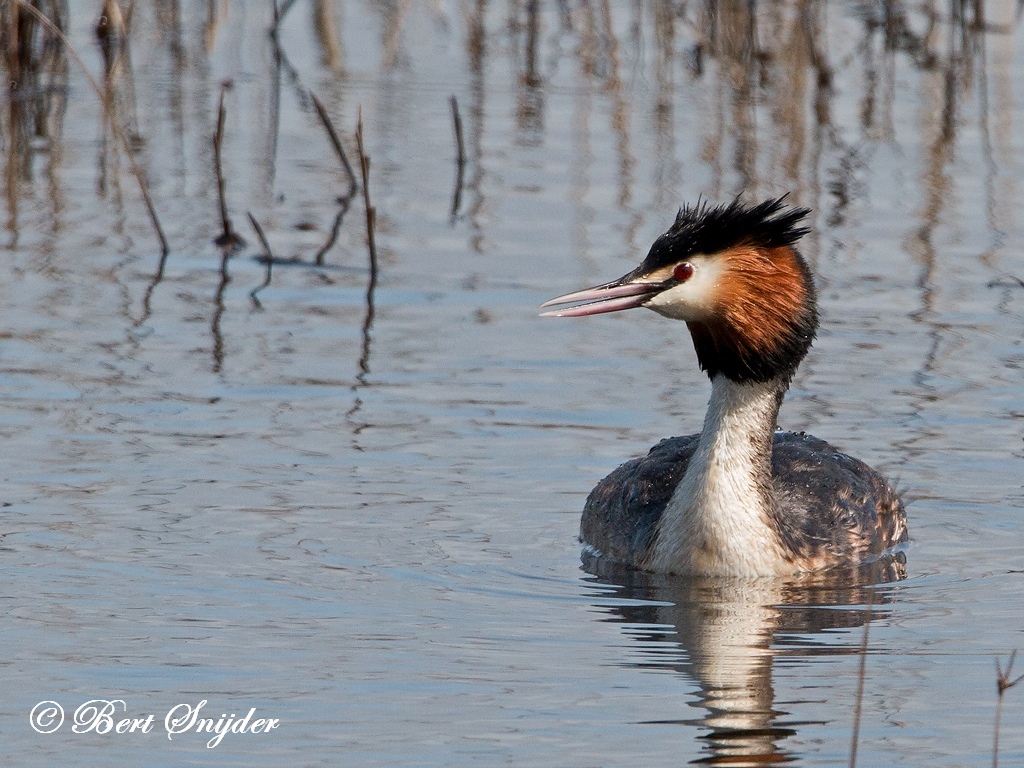
More photos at the bottom of this page:
The Great Crested Grebe is the largest member of the grebe family found in the Old World, with some larger species residing in the Americas. They measure 46–51 cm (18–20 in) long with a 59–73 cm (23–29 in) wingspan and weigh 0.9 to 1.5 kg (2.0 to 3.3 lb). It is an excellent swimmer and diver, and pursues its fish prey underwater. The adults are unmistakable in summer with head and neck decorations. In winter, this is whiter than most grebes, with white above the eye, and a pink bill. It is the largest European grebe.
The young are distinctive because their heads are striped black and white. They lose these markings when they become adults.
The Great Crested Grebe breeds in vegetated areas of freshwater lakes. The subspecies P. c. cristatus is found across Europe and Asia. It is resident in the milder west of its range, but migrates from the colder regions. It winters on freshwater lakes and reservoirs or the coast. The African subspecies P. c. infuscatus and the Australasian subspecies P. c. australis are mainly sedentary.
The Great Crested Grebe has an elaborate mating display. Like all grebes, it nests on the water’s edge, since its legs are set relatively far back and it is thus unable to walk very well. Usually two eggs are laid, and the fluffy, striped young grebe are often carried on the adult’s back. In a clutch of two or more hatchlings, male and female grebes will each identify their ‘favourites’, which they alone will care for and teach
Unusually, young grebes are capable of swimming and diving almost at hatching. The adults teach these skills to their young by carrying them on their back and diving, leaving the chicks to float on the surface; they then re-emerge a few feet away so that the chicks may swim back onto them.
The Crested Grebe feeds mainly on fish, but also small crustaceans, insects and small frogs.
This species was hunted almost to extinction in the United Kingdom in the 19th century for its head plumes, which were used to decorate hats and ladies’ undergarments.
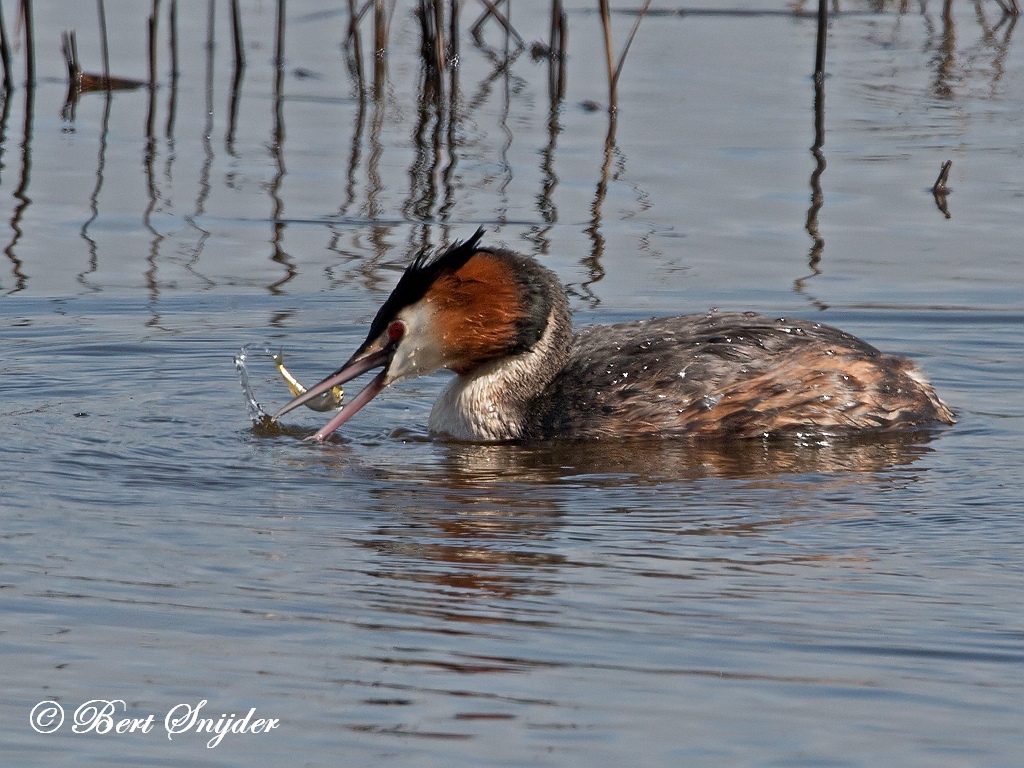
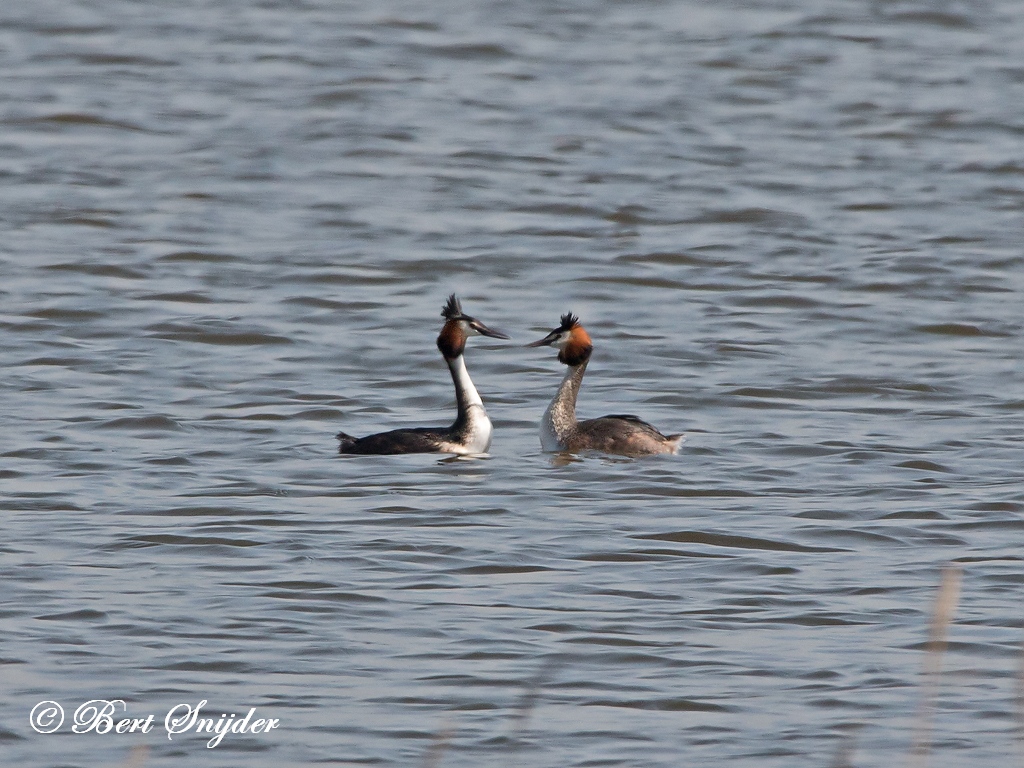
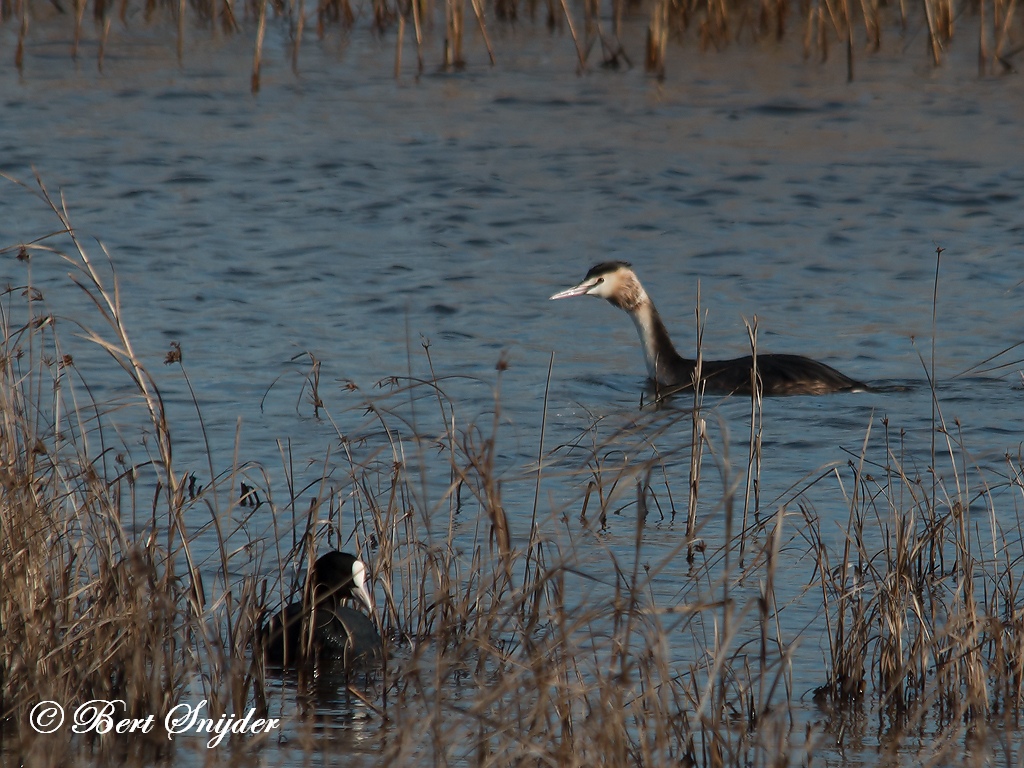
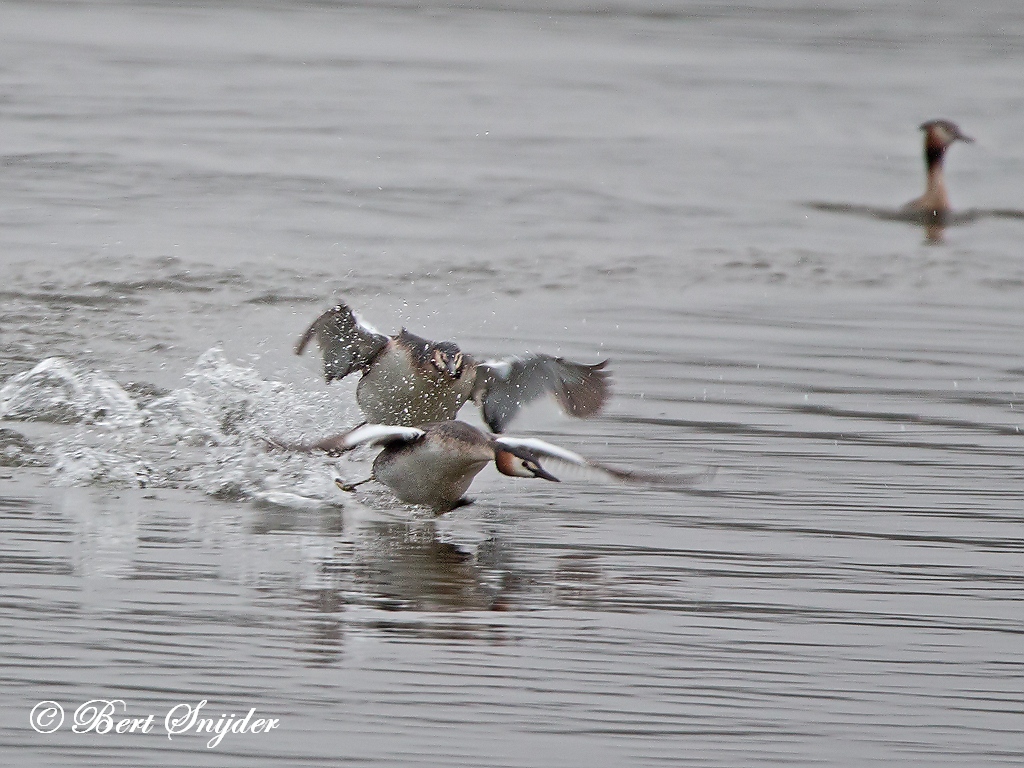
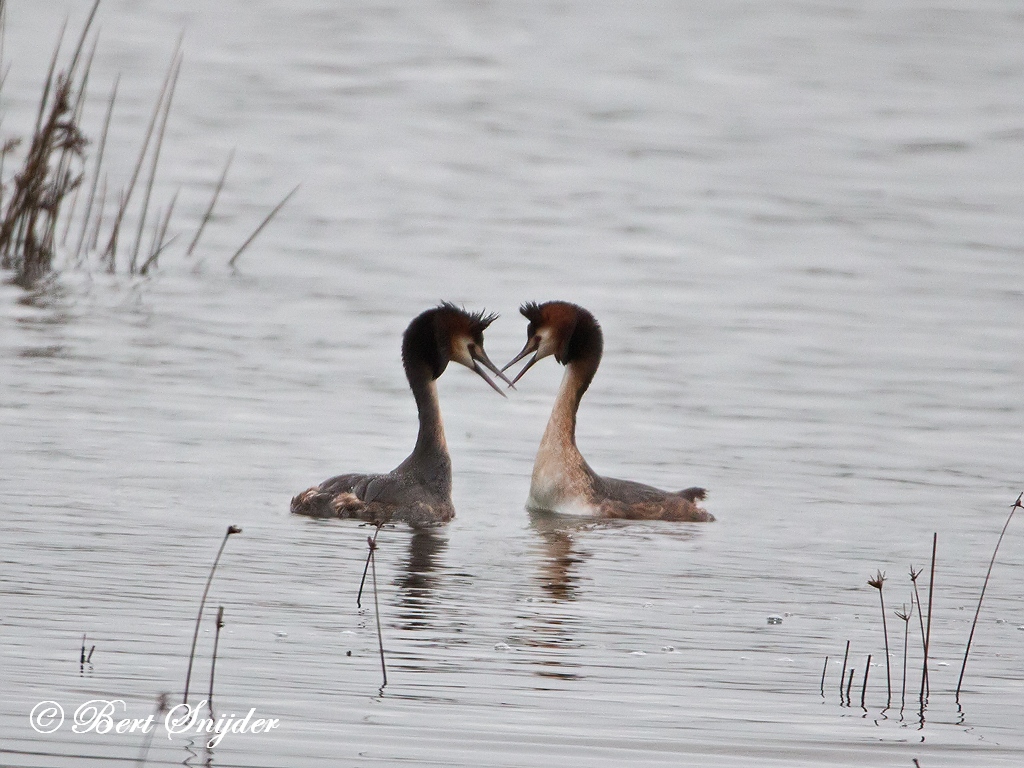

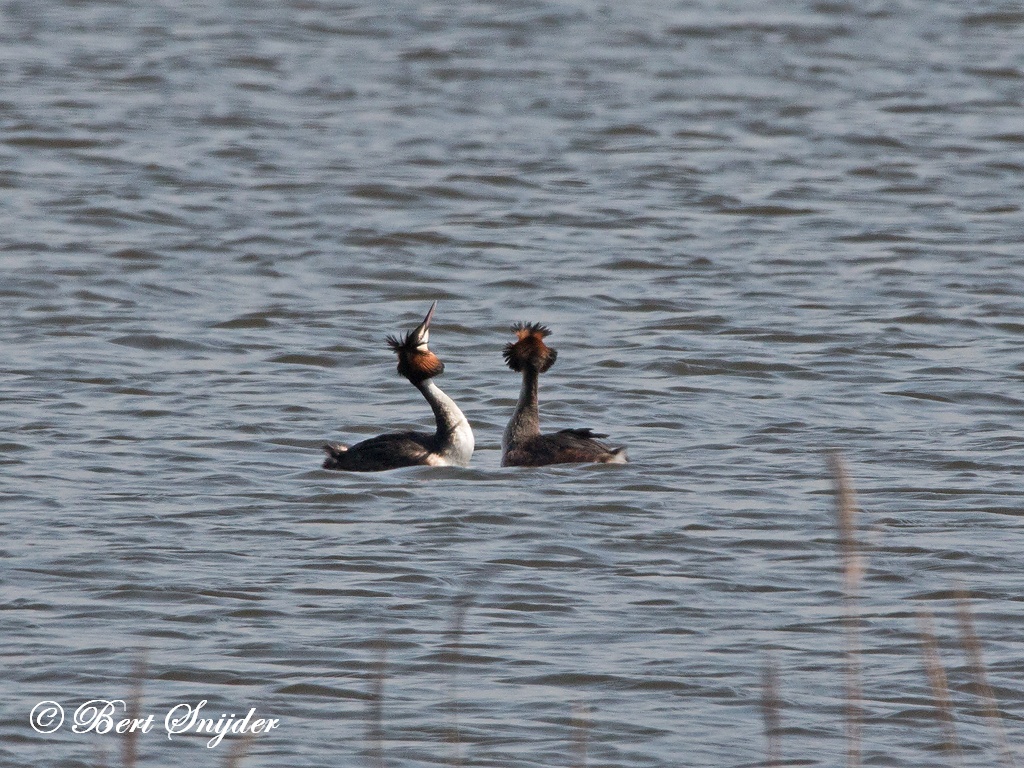
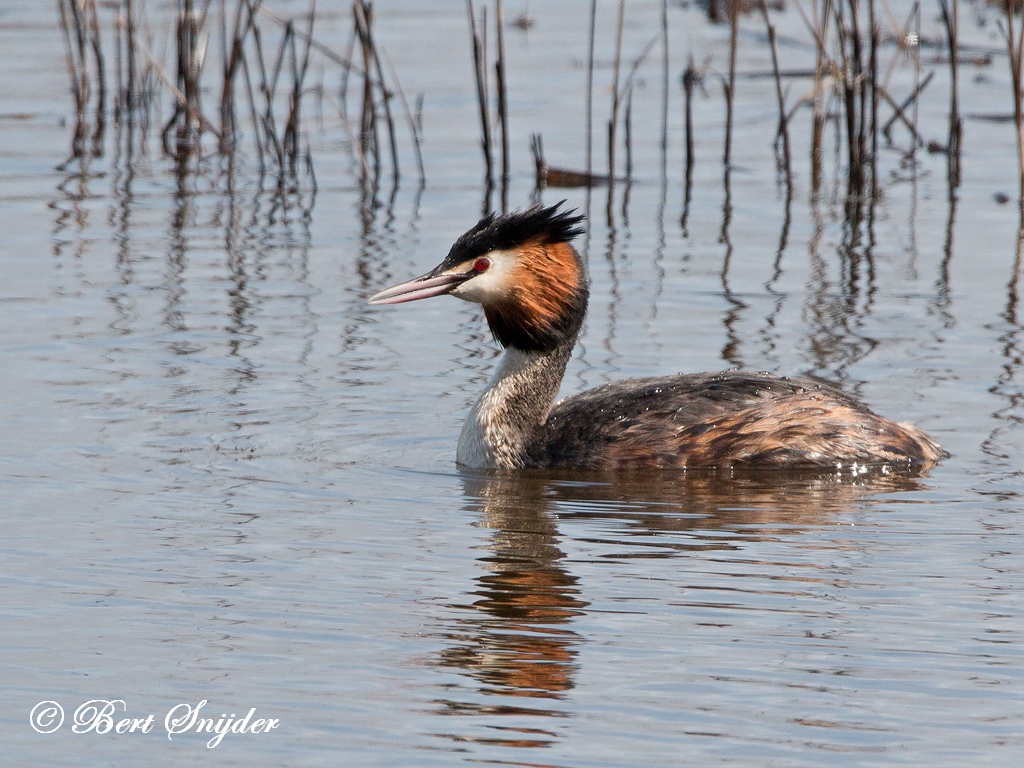
Other synonyms:
Afrikaans: Kuifkopdobbertjie
Asturian: Semerguyu, Semerguyu Grande
Breton: Ar plomer-kuchenn, Tignouz
Catalan: Cabrellot, Cabusó emplomallat, Cabussó emplomallat, Soterí gros
Catalan (Balears): Soterí gros
Valencian: Cabrellot
Czech: Potápka rohác
Welsh: Gwyach fawr, Gwyach fawr gopog, Gwyach gopog
Danish: Toppet lappedykker
German: Haubensteißfuß, Haubentaucher
English: Crested Grebe, Great Crested Grebe, Great-crested Greb, Great-crested Grebe, Puteketeke, Southern Crested Grebe, Tippet Grebe
Esperanto: Tufgrebo
Spanish: Somormujo Lavanco
Estonian: Tuttpütt
Basque: Cabusó emplomallat, Murgil handi, Murgil handia
Finnish: Silkkiuikku
Faroese: Kambsgjør
French: Grèbe huppé
Frisian: Hjerringslynder
Irish: Faoithean, Foitheach Mór, Lúnadán
Gaelic: Gobhlachan Laparan
Galician: Cabusó emplomallat, Mergullón cristado
Manx: Eean Kereen
Croatian: Cubasti Gnjurac
Hungarian: Búbos vöcsök
Armenian: [Metz Suzak ]
Indonesian: Titihan Jambul
Icelandic: Toppgoði
Italian: Svasso maggiore, Svasso meggiore
Japanese: kammurikaitsuburi, kanmurikaitsuburi, Kanmuri-kaitsuburi
Cornish: Gryb kernek
Latin: Podiceps cristatus
Lithuanian: Ausuotasis kragas, Kuoduotasis naras, Naras
Maori: Pateketeke
Dutch: Fuut
Norwegian: Toppdykker, Topplom
Polish: perkoz dwuczuby
Portuguese: mergulhão de crista, Mergulhão-de-crist, Mergulhão-de-crista
Romansh: Sfunsella da la cresta
Russian: Chomga, Podiceps cristatus
Scots: Gobhlachan laparan
Slovak: Potápka chochlatá
Slovenian: copasti ponirek
Albanian: Kredharaku i madh
Serbian: cubasti gnjurac, veliki cubasti gnjurac
Swedish: Skäggdopping
Swahili: Kibisi Ushungi
Turkish: Bahri, Tepeli Yumurta Piçi
Tsonga: Nyakupetana
Travel Birdwatching Holiday Alentejo, Vacation Portugal for birders to see birds on your trip.